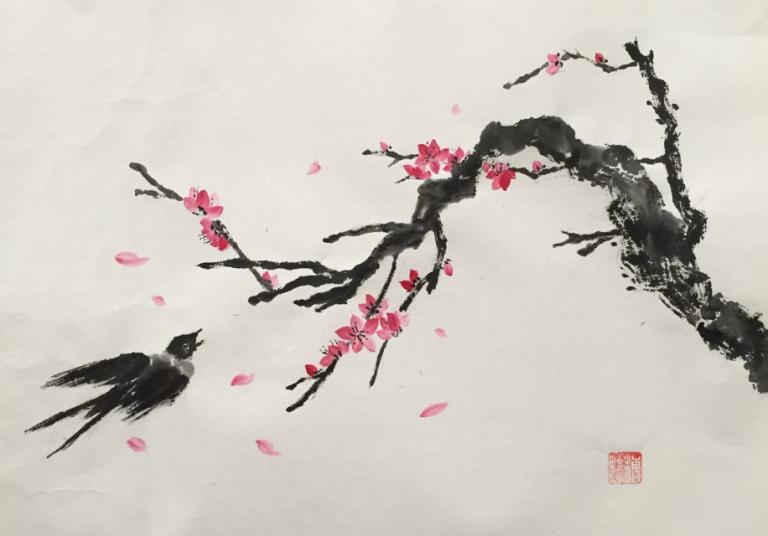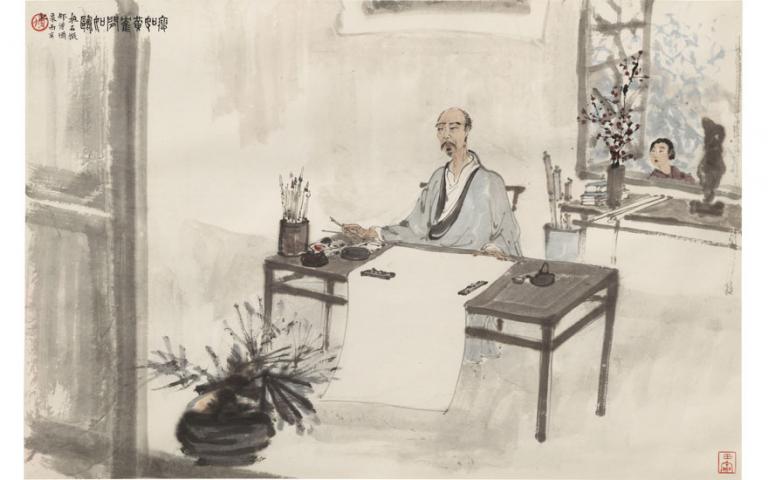Flower and Bird Painting in the Five Dynasties
3 min readFlower-and-bird painting gained great development in this period. There were many painters good at flower-and-bird painting. The rulers needed the paintings to decorate the palace, to glorify their life and to show the peace and prosperity under their reign, so they paid special attention to flower-and-bird painting.
Emperor Huizong Zhao Ji greatly developed the Imperial Art Academy during his reign.

So court painting including flower-and-bird painting grew in a high speed as never before. As logos were important in flower-and-bird painting in Song dynasty, painters attached great importance to the observation of flowers and birds in their natural state and their lifelikeness in painting. As literati painting came into being, painters painted certain subject such as plum blossom, bamboo, chrysanthemum and daffodil to express their spiritual pursuit and aesthetic taste. Therefore, these subjects became important parts of flower-and-bird painting. Besides, the depiction of animals and horses also achieved high artistic level. Important flower-and-bird painters at the time were as follows:
Zhao Chang, with Changzhi as his courtesy name, was from Jiannan(in Sichuan today). He specialized in painting flowers, birds, grass and insects. He learned painting skills from Teng Changyou. He was good at observing the appearance of flowers and directly using colors to sketch flowers. He was known as “grasping the spirit of flowers with lifelikeness”. He called himself “Sketcher Zhao Chang”. His work left today is Sketched Butterflies.
Cui Bai, also named Zixi, was from Haoliang (Fengyang, in Anhui today). He was a member of the Imperial Art Academy during the years of Yuanfeng from 1078 to 1085.
He specialized in flower and bird painting, Buddhist and Taoist painting, figure painting as well as mural painting. Cui Bai was good at depicting flowers and birds in their natural state with particularity, accurateness and lifelikeness. Most of his paintings were in a dreary, desolate and cold atmosphere, Cui could always sketch the appearance and manner of flowers and birds accurately according to the change of season in nature. He turned over the refined and luxuriously beautifustyle of flower-and-bird painting started by Huang Quan and his son from early Northern Song dynasty and initiated a new style of flower-and-bird painting. His works Two Magpies and Wintry Sparrow have been handed down to posterity.
Zhao Ji(1082-1135), Emperor Huizong of Song dynasty, was fatuous in politics yet luxurious in life. He extorted excessive taxes and levies which finally aroused the peasantry rebellion. He compromised to the Jin dynasty from northern China so as to keep a peaceful living of himself and finally led to the Jingkang Incident. Heand his son Emperor Qinzong were captured by Jin soldiers and died in Wuguocheng (Yilan in Helongjiang province today). As an incapable emperor, he was versatile in art and literature, being expert in poetry, drama, music, calligraphy and painting.
Zhao Ji was good at landscape painting, flower-and-bird painting and figure painting. His painting was delicate and refined based on careful observation. And the style was beautiful and elegant, which reflected the aesthetic taste of theroyal family and noble class. His works include Golden Pheasant and Cotton Rose Flowers, Auspicious Cranes, Plum and Birds, etc were handed down to posterity.

Li Gonglin, with style name Boshi, was born in Shucheng (in Anhui today). He served the government when he was young and retreated to his hometown Longmian Sleeping Dragon Villa in his senior years. He titled himself as Upasaka of Sleeping Dragon. He had abundant collection of art works at home and was an expert of art appreciation. He had cultivated himself in different aspects of art and literatureincluding poem and essay writing, calligraphy and painting. He was good at Buddhist and Taoist painting, figure painting, paintings with horses, palaces, landscapes, flowers and birds. He also excelled in copying from other painters’ works. His copy version could look so genuine that it is difficult to tell it from the original work. He was apt in using lines to sketch the form. He made the line drawing, which was once only a basic part of painting, an independent style of representation form hence enriched the painting techniques of Chinese painting. He excelled in painting horse. Based on careful observation, the horses he painted were really lifelike andvivid. His paintings left today were mainly horse paintings including Five Horses, and Copy of Wei Yan’s ‘ Horse Grazing’.








